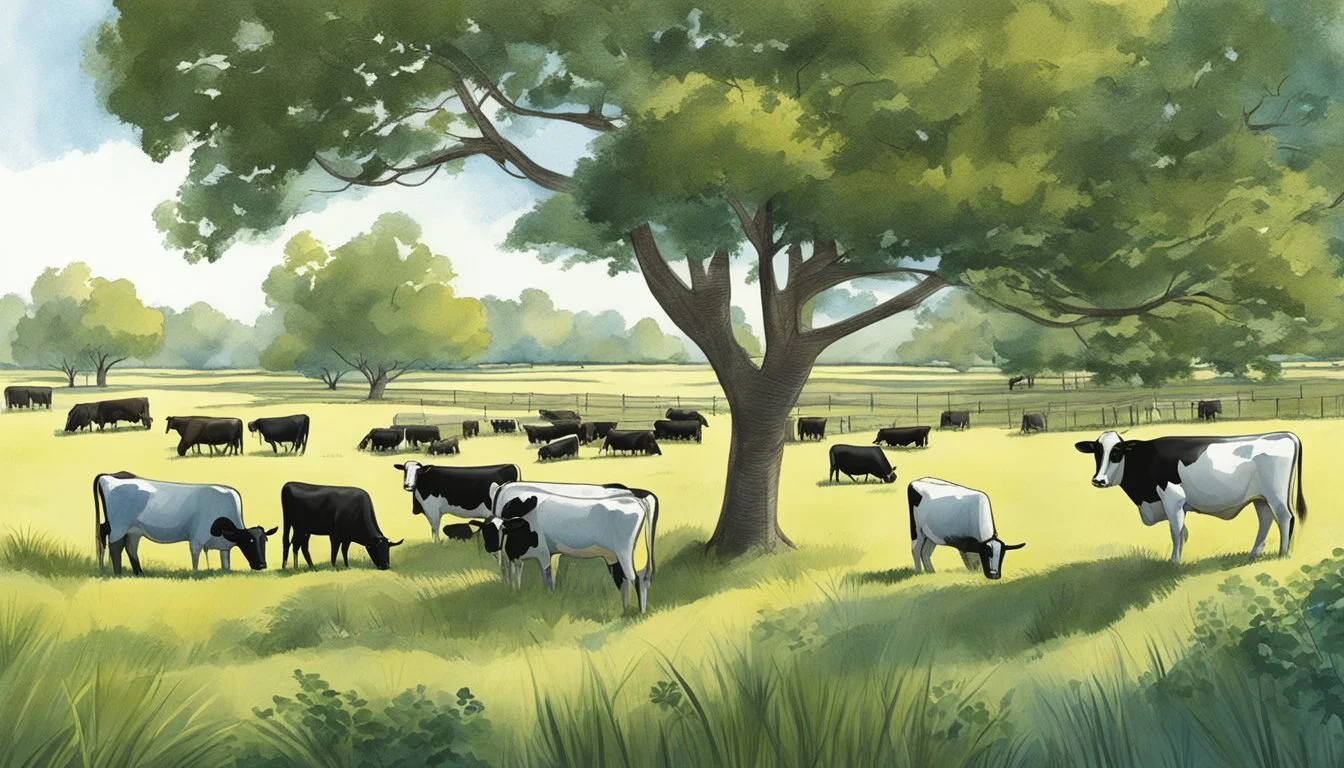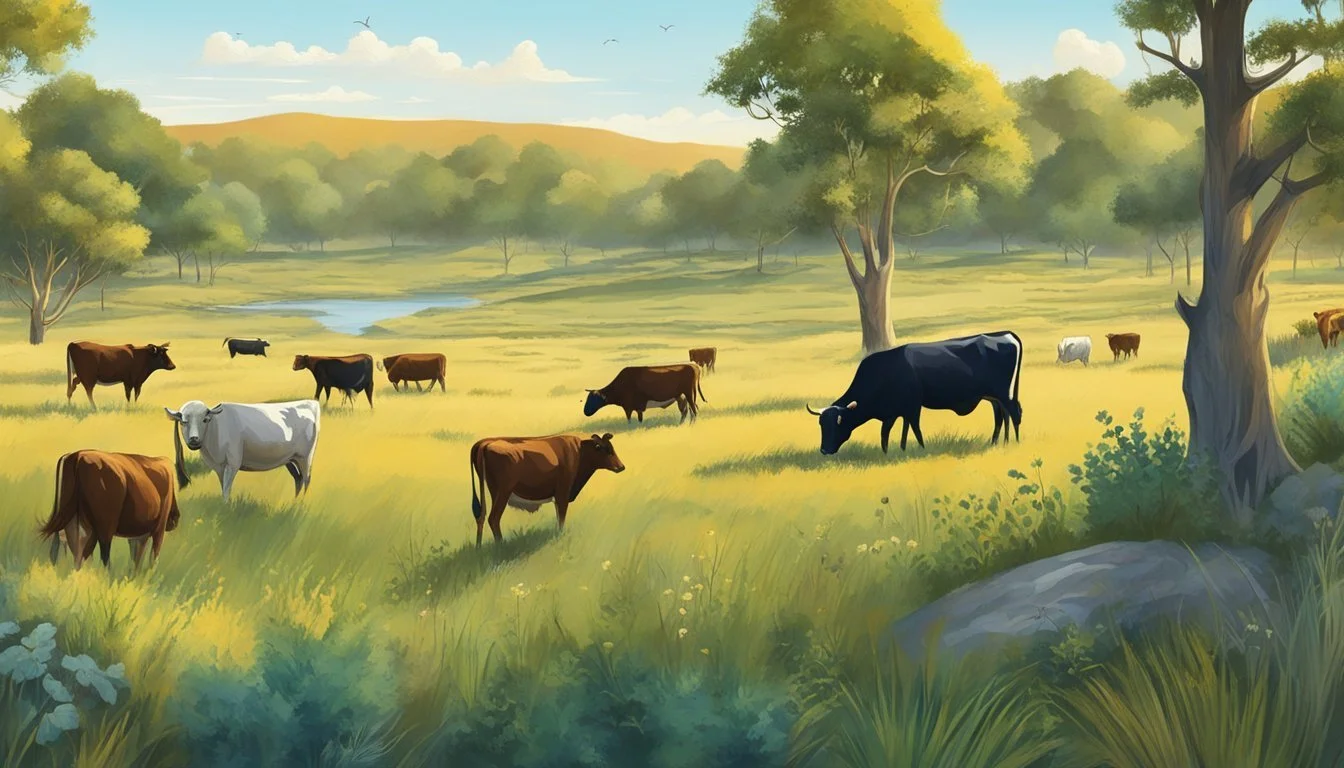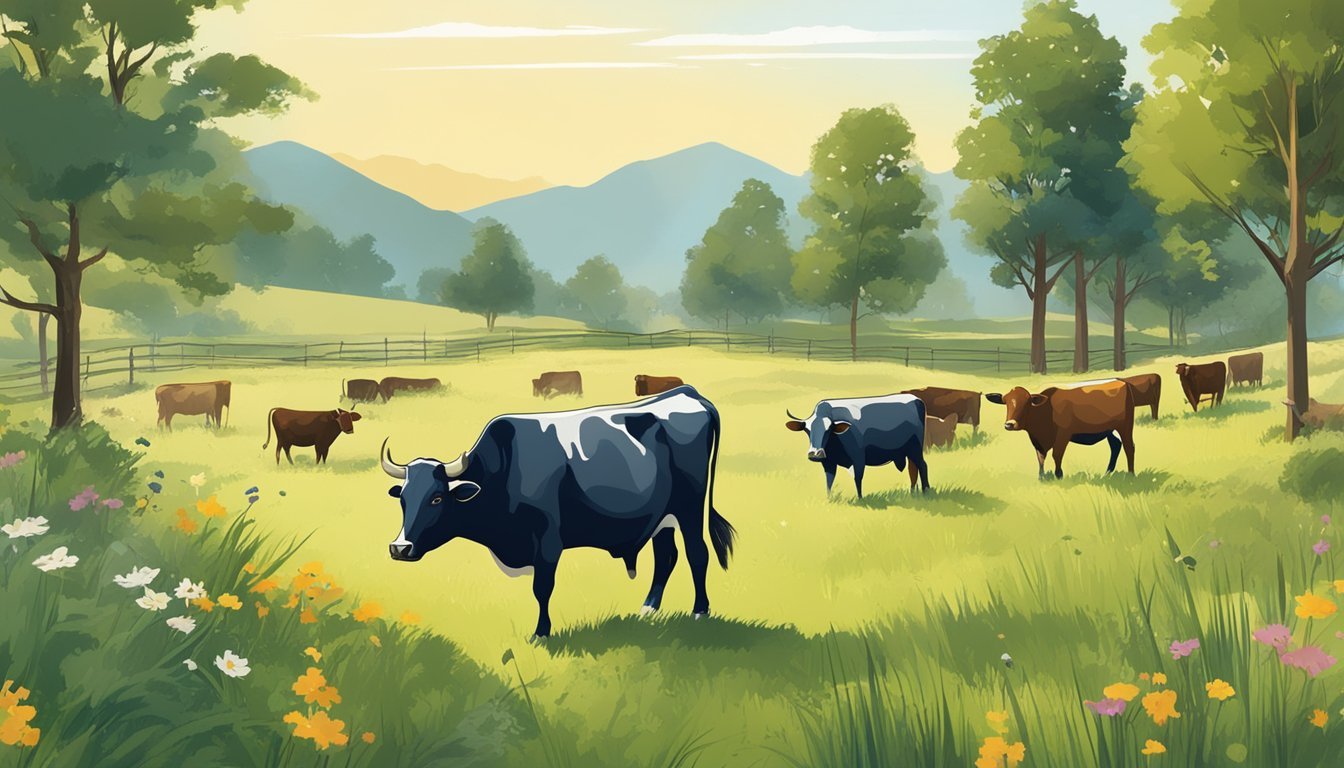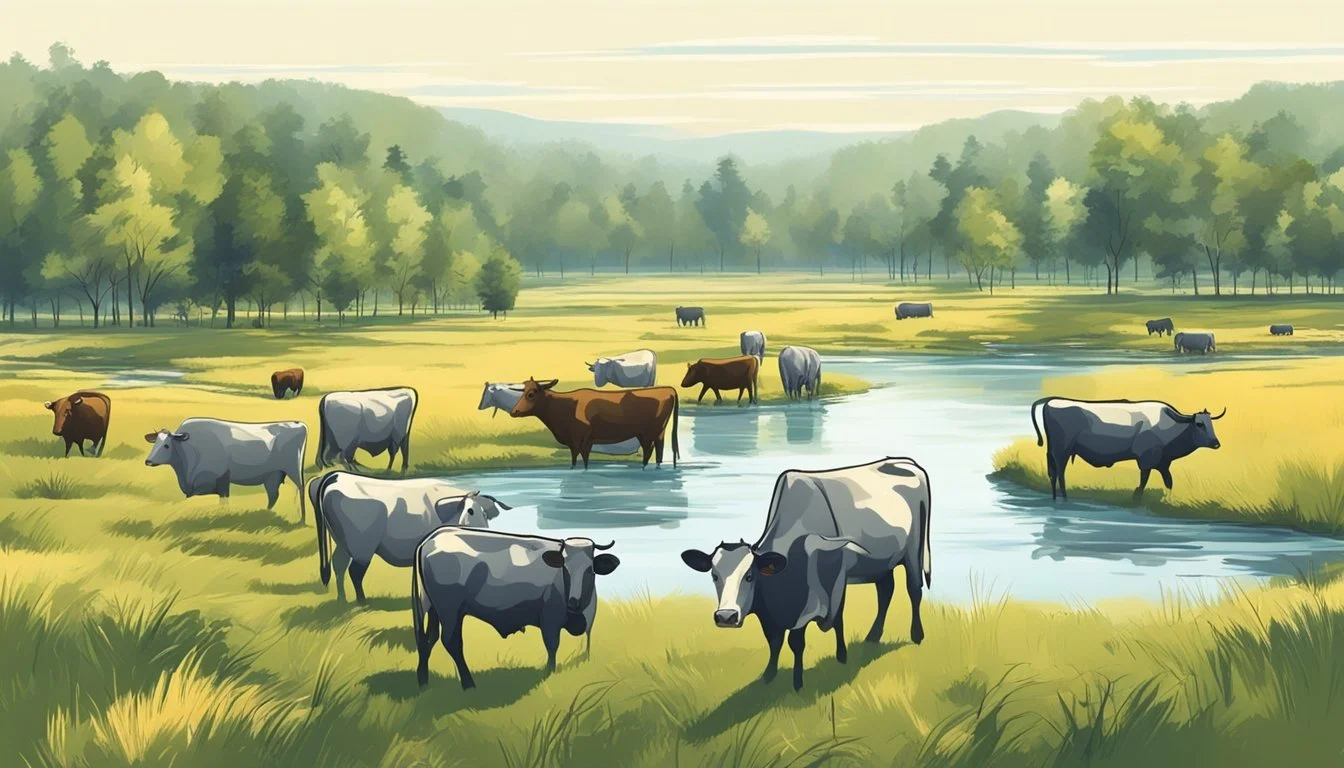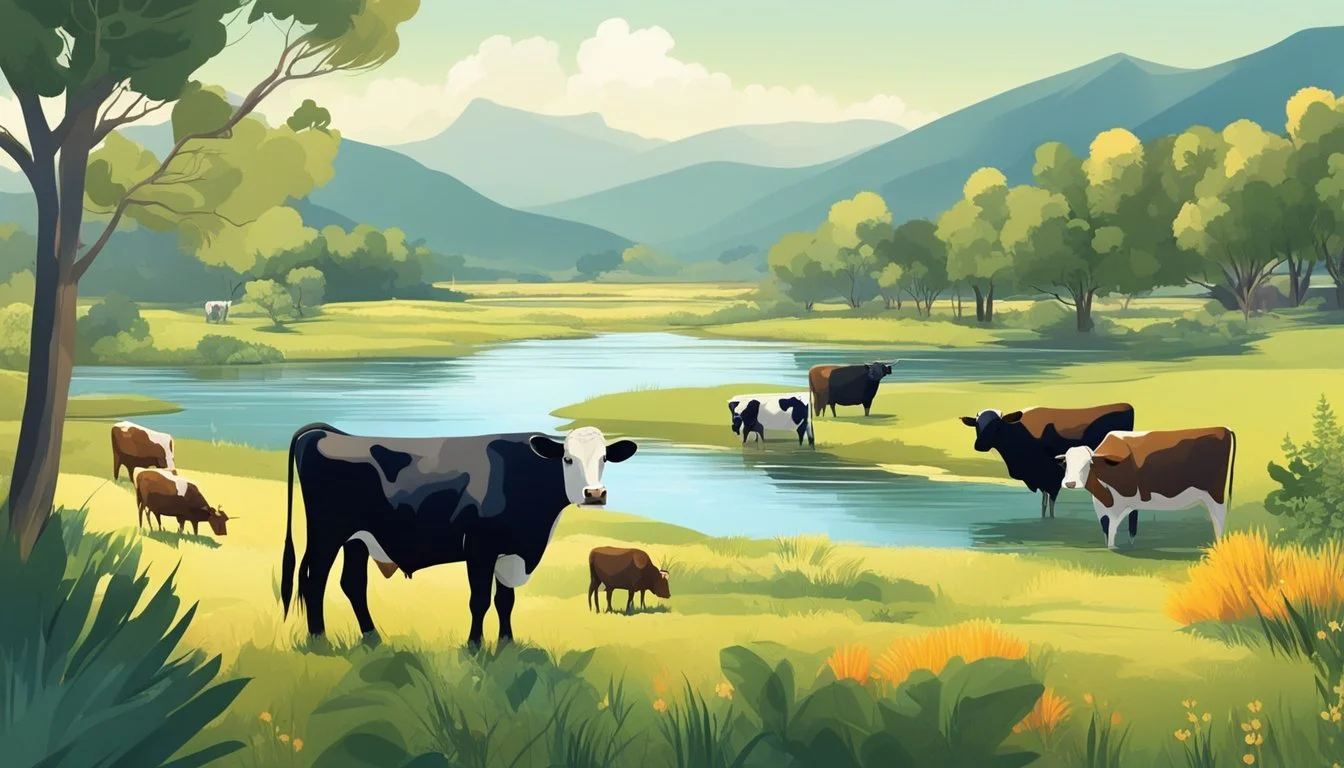How do I manage cattle to maintain ecosystem health
Strategies for Sustainable Grazing
Managing cattle effectively is pivotal for maintaining ecosystem health, combining careful grazing management with principles of sustainable agriculture. The health of the ecosystem is inextricable from the practices of cattle management. When executed thoughtfully, these practices can support biodiversity, enhance soil quality, and maintain balance within the environment. Grazing cattle have the potential not only to produce food but also to contribute to the sustainability of agricultural systems.
Grazing management strategies are essential in this process, as they determine the impact cattle have on the land. By incorporating rotation and timing in grazing techniques, the negative effects on pastureland can be mitigated. These strategies help to prevent overgrazing, which can lead to soil erosion and decreased plant diversity. As the plants recover, they sequester carbon and contribute to a healthier atmospheric composition, all the while sustaining the livestock with nutrient-rich forage.
Understanding the interconnectedness of livestock, land, and community facilitates the implementation of holistic management approaches that benefit all elements of the ecosystem. Initiatives such as holistic management for cattle ranchers focus on the bigger picture, encouraging decisions that promote environmental enhancement alongside economic viability. This aligns with the goals of sustainable agriculture that seek to produce food while preserving the ecological balance. With the right management, farmers can ensure their cattle are not just a source of sustenance but also stewards of the land.
Understanding Ecosystem Health
Maintaining the health of ecosystems is critical for sustainable agriculture and livestock management. Sound practices in this realm ensure vital ecosystem services endure and resilience against environmental stressors is bolstered.
Importance of Ecosystem Services
Ecosystem services are foundational to agricultural productivity and the global environment. They include pollination of crops, nutrient cycling, and natural pest control. In the context of livestock management, these services enhance soil health and promote biodiversity, both of which are crucial for a robust ecosystem. It's essential to recognize that livestock can be instrumental in managing land for food production, as they contribute to soil health and carbon sequestration, especially in areas affected by past mismanagement.
Evaluating Soil Health
Healthy soil is a cornerstone of any resilient ecosystem, supporting plant growth, water filtration, and carbon storage. Indicators of healthy soil include abundant microbial activity, optimal nutrient content, and good structure. Practices like crop rotation and cover cropping are effective in enhancing soil quality. Moreover, grazing techniques can improve not just soil but also watershed health, as evidenced by various ranch operations focusing on advancing grazing to benefit both.
Role of Water in Ecosystems
Water quality has a profound influence on ecosystem health. It supports plant and animal life and maintains the natural processes essential for the survival of all organisms. Effective cattle management should therefore preserve and improve watershed health, ensuring that water sources remain uncontaminated and that livestock contribution to water cycle processes is positive.
Effects of Climate Change on Ecosystems
Climate change poses a significant threat to ecosystem balance, affecting temperature, precipitation patterns, and the frequency of extreme weather events. These changes can disrupt the delicate relationships within ecosystems, making them less resilient to additional stresses. Sustainable livestock practices must therefore be climate-smart, seeking to reduce greenhouse gas emissions and enhancing the ecosystem's ability to adapt to climate change while also mitigating its impacts.
Fundamentals of Cattle Management
Effective cattle management is integral to maintaining ecosystem health. It requires an understanding of how grazing behavior impacts grasslands, the importance of optimized production practices, soil fertility, and water usage.
Cattle Grazing and Ecosystem Interactions
Grazing is a natural process that, when managed properly, supports diverse ecosystems and vibrant grasslands. Strategic grazing practices ensure that cattle contribute positively to their environment by promoting the growth of native plant species and reducing the risk of wildfires. Practices such as rotational grazing allow vegetation time to recover, encouraging a healthy balance within the ecosystem.
Optimizing Cattle Production
Maximizing cattle production involves more than just increasing headcount. It encompasses breeding practices, health management, and nutrition—all aimed at boosting productivity while conserving resources. Selective breeding can enhance desirable traits, while health monitoring and preventative care minimize disease outbreaks. This optimizes the herd's performance and maintains a steady production rate, aligning with sustainable ecosystem management.
Maintaining Soil Fertility Through Cattle Management
Soil health is fundamental to sustainable cattle management. Cattle can enhance soil fertility by redistributing nutrients through their waste. By managing stocking rates and grazing periods, farmers can prevent overgrazing, compaction, and erosion—issues that seriously degrade soil health. Healthy soils support a dynamic ecosystem and improve grassland productivity, benefiting both the environment and the cattle.
Water Management in Livestock Operations
Water management is a critical aspect of cattle ranching. Water sources for cattle should be clean and well-maintained to prevent contamination and disease. Efficient water use in livestock operations conserves this precious resource and helps maintain the ecological balance of wetlands, rivers, and other water-dependent habitats. Proactive measures include monitoring water quality and implementing water-saving technologies in cattle facilities.
Grazing Management Practices
Effective grazing management practices are essential for maintaining the health of ecosystems and ensuring sustainable cattle production. These practices directly influence forage availability, soil health, and the overall condition of rangelands.
Rotational Grazing and Its Benefits
Rotational grazing involves dividing pasture into smaller areas and moving livestock between them to allow forage plants to recover before being grazed again. This technique promotes a uniform distribution of grazing pressure, which can lead to a multitude of environmental benefits. Rotational grazing has been shown to enhance soil structure, increase biodiversity, and improve water infiltration.
Enhances soil health: Regular periods of rest offered to pasture plots increase the root depth of forage plants, leading to healthier soil composition.
Supports forage regrowth: It optimizes forage regrowth by preventing overutilization of plants.
Encourages biodiversity: By altering grazing patterns, rotational grazing offers habitats for a wider range of plant and animal species.
Managing Overgrazing Risks
Overgrazing is a major risk that can lead to reduced plant diversity, soil erosion, and decreased productivity of the rangeland. To manage overgrazing risks:
Monitor forage utilization closely, ensuring that no more than one-third to one-half of the available plant material is consumed.
Adjust stocking rates based on forage availability and pasture health. Reducing livestock numbers during drought or periods of slow plant growth can prevent overuse of rangelands.
Implementing Managed Grazing
Managed grazing implies a strategic approach to controlling the timing, intensity, and frequency of animal grazing to promote ecosystem health. Key considerations for implementing managed grazing include understanding the specific forage requirements of the cattle and the carrying capacity of the rangeland.
Plan grazing movements: Create a grazing schedule that aligns with plant growth cycles and seasonal changes.
Use adaptive management: Regularly assess pasture conditions and adjust grazing patterns as necessary to respond to changing environmental and climatic conditions.
By implementing these targeted grazing practices, land managers can maintain thriving ecosystems while also supporting sustainable livestock production.
Sustainable Ranching Techniques
Sustainable ranching techniques are integral to maintaining the health of ecosystems while managing cattle. These methods focus on enhancing resilience, embracing adaptive management, and promoting biodiversity through thoughtful land management.
Adaptive Management for Ecosystem Resilience
Adaptive management is a continuous process that involves observing, planning, implementing, and learning to respond to changes within the ecosystem. This approach allows ranchers to adjust their strategies to support ecosystem resilience. For instance, by monitoring soil health and vegetation, ranchers can adapt grazing patterns to prevent overgrazing and maintain the land's productivity.
Regenerative Agriculture Approaches
Employing regenerative agriculture practices aids in revitalizing the land and combatting climate change. Techniques such as rotational grazing, where cattle are moved between pastures, not only prevent land degradation but also facilitate soil carbon sequestration. Practices like these are essential in creating a self-sustaining ranch that contributes positively to the environment.
Incorporating Nature's Patterns
Mimicking natural processes on the land can lead to healthier ecosystems. For example, managing herd movement to imitate wild grazing patterns helps to naturally fertilize the soil and encourage growth of native plant species. This technique contributes to the preservation of natural habitats and supports a wide array of wildlife.
Land Management and Biodiversity
Proper land management is crucial for maintaining biodiversity. By protecting water resources, restoring native vegetation, and creating corridors for wildlife movement, ranchers can foster an environment where various species thrive. These practices ensure that ranching activities coexist with the goal of conserving biodiversity and enhancing the health of the ecosystem at large.
Conservation and Biodiversity
Efficient cattle management is crucial for enhancing wildlife habitats, protecting biodiversity, and ensuring the health of grasslands. These practices contribute to the broader goal of maintaining healthy ecosystems, which are vital for both livestock and wildlife.
Promoting Wildlife Habitat and Biodiversity
Cattle can be managed to foster a symbiotic relationship with local wildlife. By adjusting grazing patterns and periods, ranchers can provide habitats for various species. For instance, rotational grazing allows different parts of the pasture to recover, promoting a diversity of plant life that benefits insects, birds, and other native species. Strategic management of livestock is essential for maintaining corridors and spaces that serve as critical habitats for wildlife.
Grassland Preservation and Recovery
Grasslands are a crucial component of the global ecosystem. They provide a habitat for a myriad of species and play a significant role in carbon sequestration. Sustainable cattle management practices, such as controlled grazing, aid in the recovery of degraded grasslands and help maintain their resilience. This in turn supports biodiversity by preserving and restoring a habitat for numerous grassland species.
Role of Fire and Natural Disturbances
Fire and natural disturbances are integral parts of many ecosystems, including rangelands. These processes can help to control invasive species, recycle nutrients, and promote the growth of native grasses. Managed fire or mimicry of natural disturbance regimes can be incorporated into cattle management strategies to maintain a balance between grazing pressures and the natural renewal processes that support diverse rangeland ecosystems.
Impact of Agricultural Practices
Agricultural practices can profoundly influence the health of grasslands and ecosystems, primarily through grazing management, greenhouse gas management, resilience to weather events, and soil conservation tactics.
Assessing Grazing on Grasslands and Ecosystems
Proper grazing management is crucial for maintaining the health of grasslands. Overgrazing can lead to soil compaction, which detracts from soil health and contributes to erosion. However, when managed correctly, grazing can support diverse ecosystems. Techniques such as rotational grazing allow for the recovery of plant species, which can benefit the entire ecosystem. For instance, cattle can actually help reduce agriculture's carbon footprint when managed sustainably.
Greenhouse Gas Emissions and Carbon Sequestration
Agricultural practices, including livestock management, contribute to greenhouse gas emissions, yet they also have significant potential for carbon sequestration. Through photosynthesis, grasslands can capture carbon dioxide, storing carbon in plant tissues and soil. By optimizing livestock rotational schedules and feed, farmers can minimize methane emissions from cattle and enhance the soil's capacity to act as a carbon sink.
Adapting to Extreme Weather Events
Climate change increases the frequency of extreme weather events, such as droughts, impacting agricultural sustainability. Adapting practices to be more resilient is essential; this includes establishing drought-resistant grasses in pastures and maintaining ground cover to reduce water loss. These approaches help ecosystems to be more resilient to climate variability.
Preventing Soil Erosion and Degradation
Soil erosion is a major concern for the sustainability of agricultural systems and the health of ecosystems. Strategies aimed at preventing soil erosion—like minimizing soil disturbance, implementing cover crops, and creating windbreaks—can significantly improve soil quality and prevent degradation. Practices promoting soil health, such as no-till farming and maintaining organic matter in the soil, also contribute to preventing erosion. The negative effects of bare, compacted land are substantiated by its link to soil erosion and loss of topsoil quality due to runoff, as highlighted by National Geographic.
Enhancing Ecosystem Services
In managing cattle to maintain ecosystem health, focus is placed on optimizing the benefits that livestock can provide to the environment. Proper management techniques in cattle farming can boost ecosystem services, enhance water retention, improve soil health, and strengthen productivity.
Water Cycle Management and Soil Moisture Retention
Effective management of the water cycle on grazing lands is crucial for maintaining healthy ecosystems. By utilizing strategic grazing patterns, cattle can help in evenly distributing water across the land. This even distribution contributes to enhanced soil moisture retention, which supports the growth of a variety of grasses and forage species, leading to a more resilient ecosystem.
Promoting Soil Carbon Sequestration
Grazing cattle have a significant role in promoting soil carbon sequestration. Through their manure and the trampling of grasses, cattle naturally enrich the soil with organic matter, which is pivotal for sequestering carbon. This process not only mitigates the level of CO2 in the atmosphere, contributing to a reduction in greenhouse gases, but also enhances the overall soil health by increasing its nutrient content and fertility.
Strengthening Ecosystem Productivity
Maintaining robust ecosystem productivity involves fostering a rich biodiversity of plant species and the associated fauna. Managed grazing, when done correctly, can lead to stronger ecosystem productivity. Through promoting the growth of native grasses and other plant species, cattle can help ensure healthy rangelands that are more productive and sustainable over time, benefiting the broader ecosystem services they provide.
Grazing Strategies for Climate Resilience
Effective grazing strategies are essential for maintaining ecosystem health and fostering climate resilience. They include rotational and managed grazing, diversification of forage crops, and strategic grazing planning, each contributing to sustainable land management in differing climatic conditions.
Implementing Rotational and Managed Grazing
Rotational grazing involves moving livestock between pastures to allow forage plants to recover, thus promoting deeper root systems and enhancing soil stability. By implementing rotational stocking systems, farmers can improve forage yield and animal productivity per acre, while also promoting soil health and carbon sequestration. Managed grazing goes a step further to ensure that each pasture's use aligns with its ability to support livestock, paying careful attention to the needs of both the land and the herd.
Diversifying Forage Crops and Pastures
A variety of forage crops ensures that pastures are resilient to climate stressors, such as drought or flood. Diverse plant species provide a sturdy and productive soil system, supporting a range of ecosystem services including water regulation and the maintenance of soil quality. Multiple forage types also cater to the dietary needs of livestock throughout the year, balancing the ecosystem's nutritional demands.
Planning Grazing to Mitigate Climate Risks
Grazing plans should take into account expected climate risks to minimize their impact on the environment and livestock. By analyzing historical climate data and predictions, farmers can adapt their grazing schedules and stocking densities to protect against extreme weather events. This proactive approach to grazing management helps maintain a farm's environmental resources, contributing to a system that is robust in the face of changing climate conditions.
Innovative Ecosystem Management
Effective cattle management involves innovative strategies that enhance ecosystem health. Key approaches include holistic planning, pasture recovery, and the integration of cover crops and perennials, each supporting a sustainable environment.
Holistic Management and Comprehensive Planning
Holistic management is a systems thinking approach that considers all aspects of the farm ecosystem. This method encompasses not just the livestock, but also the land, the plant life, and the livelihood of the farmers involved. Through holistic planned grazing, comprehensive plans can be developed that incorporate cattle movements to mimic natural grazing behaviors, which can improve soil health and promote biodiversity.
Pasture Management and Recovery Periods
Pasture management is crucial for maintaining soil structure and fertility. Implementing a rotation system ensures pastures are not overgrazed, allowing them time to recover and regrow between grazing periods. Recovery time is essential for the longevity of the pasture, preventing erosion and encouraging deeper root systems, which in turn improves soil quality.
Utilizing Cover Crops and Perennials
Introducing cover crops and perennial plants into cattle grazing systems offers numerous benefits. Cover crops can protect the soil from erosion, enhance water retention, and boost nutrient availability. Perennial plants, with their deep root systems, enhance soil structure, reduce carbon footprint by storing carbon in their root mass, and provide forage options that are more resilient to climate fluctuations.
Advancing Sustainable Agriculture
Advancing sustainable agriculture involves the implementation of practices that promote a balance between economic profitability and ecological stability. These practices are crucial for the resilience of agriculture, benefiting both the environment and the food supply chain.
Integrating Livestock with Crop Systems
Integrating livestock into crop systems is an innovative approach that can enhance soil fertility and reduce reliance on chemical fertilizers. Cover cropping and strategic grazing are tactics that, when implemented effectively, lead to a more diverse and sustainable agricultural system. This integration helps to recycle nutrients, improve soil organic matter, and ultimately bolster the productivity of both crops and livestock.
Building a Sustainable Supply Chain
A sustainable supply chain is essential for the longevity of agriculture. It encompasses everything from the sourcing of inputs to the distribution of end products. Emphasizing local and regional suppliers can reduce transportation emissions and support local economies. By tracking and optimizing each link of the supply chain, stakeholders can minimize waste, reduce the carbon footprint, and fulfill consumer demand for sustainably produced goods.
Collaboration Among Stakeholders
Collaboration among diverse stakeholders – including farmers, agribusinesses, conservationists, and consumers – is key to the successful implementation of sustainable agriculture practices. Through partnerships, there's a consolidation of knowledge, resources, and influence, ensuring that sustainable livestock management and agricultural practices gain the support necessary to thrive. Effective communication and agreed-upon goals among these groups lead to coherent strategies that support ecosystem health and food security.
Challenges in Ecosystem Health and Management
Maintaining ecosystem health in cattle management involves addressing several key challenges, from invasive species to land conversion, and not least among these are the health issues cattle may face. Each aspect plays a significant role in the overall environmental impact and sustainability of cattle farming practices.
Addressing Invasive Species and Weed Control
Invasive species and weed invasions pose significant threats to local ecosystems. They can outcompete native vegetation, alter soil chemistry, and impede the growth of plants integral to ecosystem stability. Effective weed control strategies, such as targeted grazing and the judicious use of herbicides, are vital in managing these invasive species without causing additional harm to the ecosystem.
Impact of Land Conversion on Local Ecosystems
Land conversion for cattle grazing can lead to habitat loss and changes in local ecosystems. Transitioning forests or other native landscapes into grazing lands disrupts existing flora and fauna relationships, potentially leading to reduced biodiversity. It is imperative that ranchers consider methods to minimize the impact of land conversion by maintaining wildlife corridors and protecting key habitats within the grazing areas.
Dealing with Disease and Parasites
Cattle can fall victim to a variety of diseases and parasites, which can spread to local wildlife. Manure management is also critical, as improperly handled waste can harbor parasites and pathogens, contributing to disease transmission. It's crucial to implement robust biosecurity measures and manage pastures to break the life cycles of common parasites, thereby supporting both cattle health and the broader ecosystem.
Community Involvement and Education
Effective management of cattle to maintain ecosystem health hinges on community involvement and steadfast education efforts. Such an approach ensures that farmers, ranchers, and partners within the community are equipped with the knowledge and tools necessary for implementing sustainable practices and advancing conservation efforts.
Engaging Farmers and Ranchers in Conservation
Farmers and ranchers play a pivotal role in ecosystem management. Encouraging their participation in conservation initiatives can be transformative. For example, ranchers can implement holistic management techniques that consider the well-being of the land, animals, and the surrounding community, leading to sustainable enhancement of the environment.
Promoting Environmental Education
Education is a cornerstone for fostering environmental stewardship. Through targeted educational programs, individuals can learn about the impact of livestock on soil health and carbon sequestration, as well as practices to improve land management that have suffered from past mismanagement. Resources like academic journals offer insight into how livestock can be beneficial to ecosystems when managed correctly.
Building Partnerships for Sustainable Practices
Collaboration between various stakeholders is essential for advancing sustainable practices within livestock management. By building partnerships, communities can harness a collective approach towards ecosystem health. Such alliances are necessary for the real-world implementation of One Health approaches, which understand the connections between the environment, animals, and human health.
Technological Innovations in Grazing Management
With advancements in technology, modern grazing management practices have evolved, incorporating sophisticated tools to maintain ecosystem health. These innovations allow for more precise management of livestock and rangelands, ensuring sustainability and productivity.
One significant innovation is smart farming technology, which encompasses various tools for monitoring and managing livestock in real time. For example, GPS collars can track cattle movements and behavior patterns, informing decisions on when and where to rotate grazing to prevent overuse of vegetation.
Additionally, grazing ecosystems are supported by infrastructure such as automated weighing stations that facilitate adaptive management. These stations provide data on animal growth rates, which are essential in managing grazing intensity and duration to optimize both livestock health and grassland condition.
Another layer of innovation includes remote sensing technologies, such as drones equipped with cameras and sensors. These devices can assess vegetation cover, soil moisture levels, and other critical parameters. Stakeholders can deploy these tools to make informed decisions, enhancing the synergies between livestock production and ecosystem conservation.
Key Technological Tools:
GPS tracking collars
Automated weighing stations
Drones and remote sensors
Implementing these technological tools requires a systemic approach, integrating them with knowledge transfer and stakeholder collaboration to maximize their impact on grazing management. It is through these concerted efforts that the benefits of technology can be fully harnessed for the health of grazing ecosystems.
Final Considerations and Future Directions
When managing cattle to maintain ecosystem health, it is essential to recognize the interconnected nature of ecosystems and the role that sustainable practices play. Research and technological advances offer promising future directions in grazing management. Precision livestock farming techniques exemplify this, allowing for real-time monitoring of herd health and behavior as discussed in Revolutionizing Cattle Management.
Sustainable practices need to be at the forefront of modern cattle management. They ensure that grazing management not only supports cattle health but also contributes to the health of the ecosystem. Practices such as rotational grazing are critical, as they can prevent overgrazing and promote soil regeneration.
In terms of ecosystem health, the focus should also include:
Biodiversity conservation: Maintaining diverse species of flora and fauna can contribute to a resilient ecosystem.
Soil health: Soil quality is paramount, as healthy soil supports plant life and stores carbon.
Water resources: Efficient water use and protection of waterways from contamination are vital.
For future directions, areas like genetics may offer pathways to breed cattle that are better suited to varying environmental conditions. Additionally, as outlined in materials like the Beef Cattle Production and Management resource, a comprehensive understanding of all factors influencing cattle production is necessary.
Integrating these elements requires a commitment to ongoing education and adaptation, embracing new findings and technologies to ensure that cattle management practices align with ecological sustainability goals.

